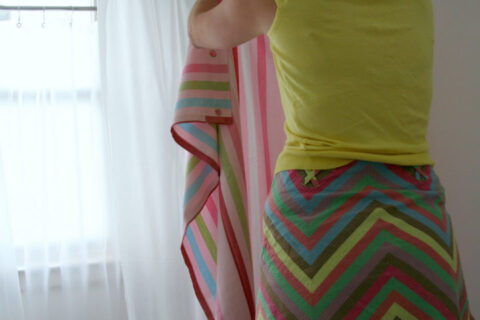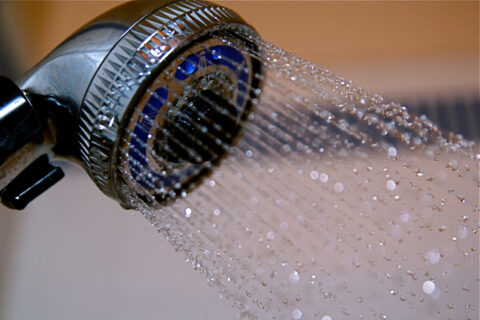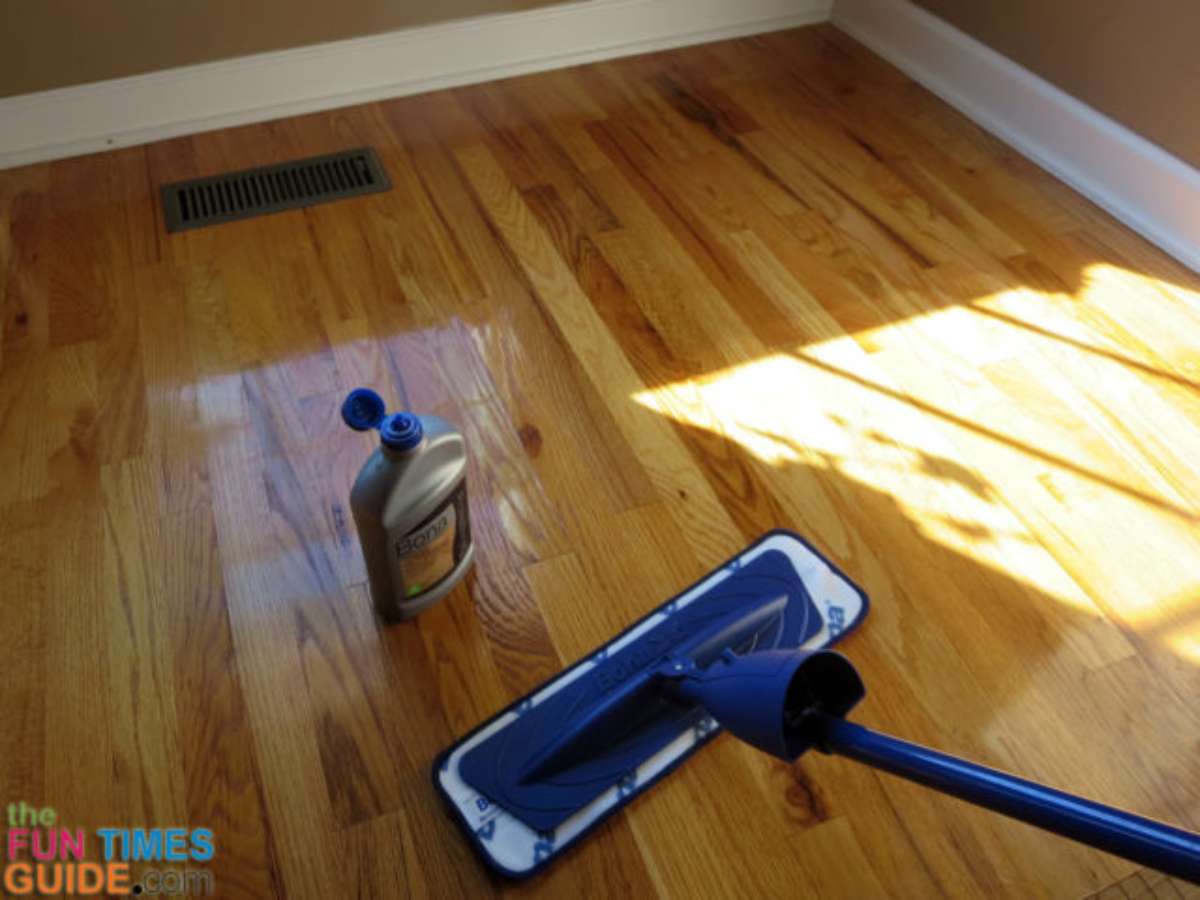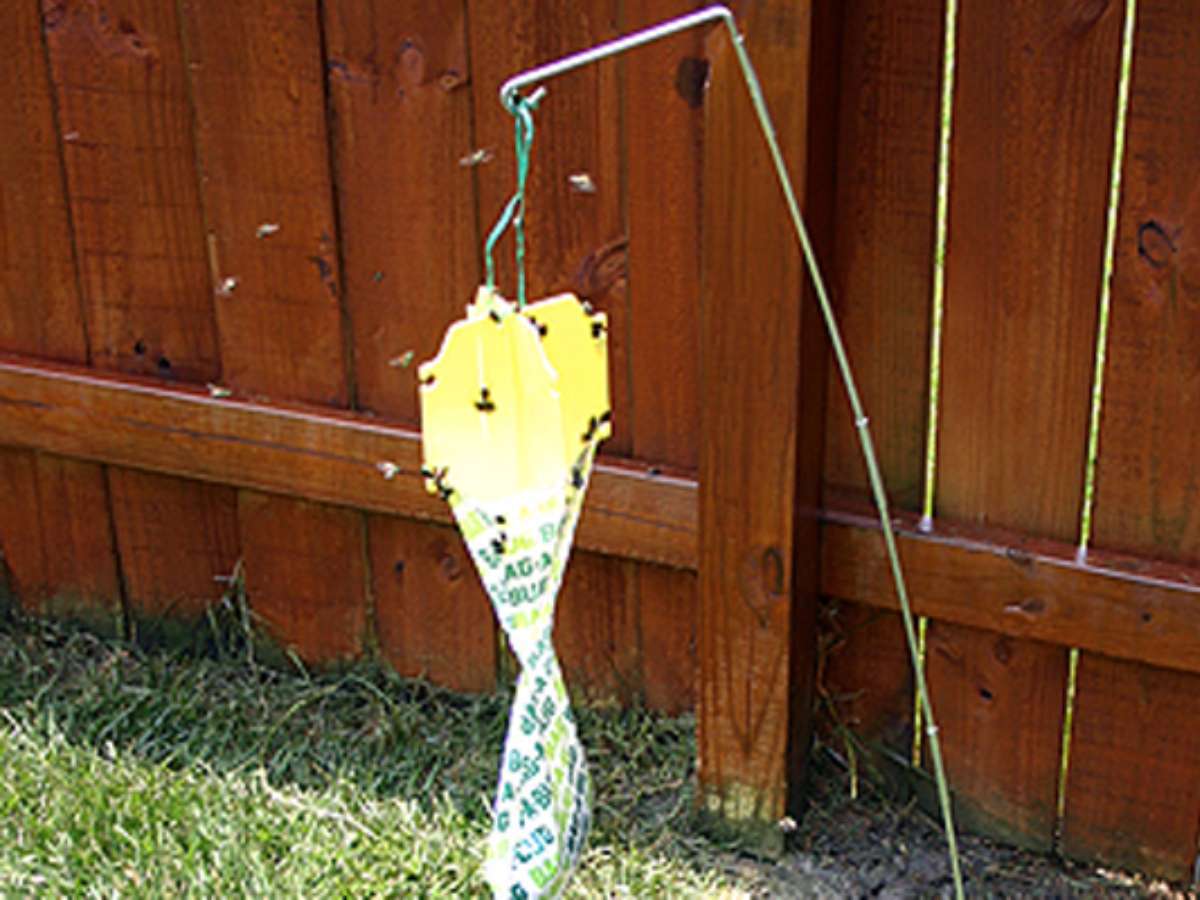Have you ever noticed that your shower curtain blows inward when the water’s running and you’re taking a shower?
This seems to happen with every shower curtain I’ve ever owned and I’ve been curious why.
I thought it had something to do with a draft from my bathroom’s air conditioning register, which blows directly toward the showering area.
Guess what? I closed the air vent and the shower curtain still blows in toward me when I’m showering.
So I decided to figure out what’s going on.
I quickly learned that the so-called shower curtain effect has to do with science.
Here’s the interesting thing, though — it seems scientists aren’t exactly sure what causes shower curtains to blow in toward bathers; it’s thought that several scientific things may be happening at once.
Why Shower Curtains Blow In & Cling To Us
To give you a better idea of what I’m talking about, this video demonstrating a product designed to keep shower curtains from blowing in shows a shower curtain getting sucked in by running water:
There are several theories for why this happens…
Theory #1: The Bernoulli Effect
This is the most widely cited reason as to why shower curtains blow inward when water is running.
Quite simply, the Bernoulli Effect says that an increase in velocity will create a decrease in air pressure.
In the case of a shower, the principle states that air will move in the same direction as running water.
Since the air would be flowing parallel to the shower curtain, this would create low pressure in that area.
Since the air pressure on the outside of the shower curtain would be higher than the space inside the showering area, the shower curtain would therefore blow inward.
The air pressure differential is even relatively greater if the person taking the shower is standing close to the shower curtain — which would explain why the shower curtain always clings to you if you stand too close to it while showering.
Theory #2: The Coanda Effect & Boundary Layer Attachment
The Coanda Effect (also known as boundary layer attachment) states that a stream of fluid, water in this case, is attracted to the surface of nearby objects.
While some aspects of the Coanda Effect might be at play in the shower, it’s important to remember that the shower stream isn’t really moving toward the shower curtain — it’s the shower curtain that blows inward toward the running water.
Theory #3: The Horizontal Vortex Theory
One study suggests that the motion of running water coming from a shower head creates a horizontal vortex that has an area of low pressure in the middle.
This sucks the shower curtain inward.
Theory #4: The Chimney Effect
The Chimney Effect (or Stack Effect) is based on the fact that warm air is light and less dense, causing it to rise. Cooler air, meanwhile, is heavier and denser than warm air and thus sinks.
In this case, the Stack Effect theory would suggest that as warm air rises out of the shower, cool air rushes in below the shower curtain to take the place of the rising air.
While this would certainly make sense for warm showers, you might notice that your shower curtain tends to blow in even if you’re taking a cold shower.
So the Chimney Effect theory, while intriguing, may not be what causes shower curtains to suck in toward running water.
How To Prevent Shower Curtain Cling
Now that we’ve explored some theories about why shower curtains flow in toward us while we’re showering, let’s talk about what we can do to stop this from happening.
After all, I find it rather irritating to be taking a shower only to have a moist shower curtain stick to my clean body! Don’t you?
Here are some products you can buy to prevent shower curtain cling from intruding on your shower experience:

- Shower curtain weights and magnets — Place magnets on the bottom of your shower curtain, so it will stay in place while you’re showering. (The magnets hold each other in place; put one on either side of the curtain.) Many shower curtain liners are pre-equipped with small, round magnets that stick to the inside of the tub. There are also more decorative shower curtain weights (or drapery weights) that serve a similar purpose.
- Heavy shower curtains — Use a heavy shower curtain (or liner) instead of a thin one. For example, shower curtain liners typically range in thickness from 3 gauge to 10 gauge. The ones that have more weight to them are less likely to blow in while you’re showering.
And if you want a really neat shower curtain to start with, check out the Periodic Table shower curtain. You’ve probably seen it on the popular CBS TV show The Big Bang Theory!
More Tips For Shower Curtain Issues
In addition to the links I’ve included above, here are some other resources to help you avoid shower curtain cling:







